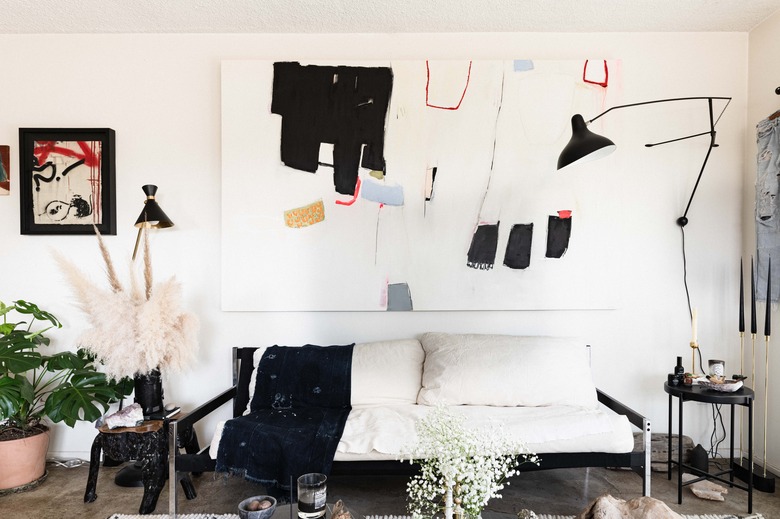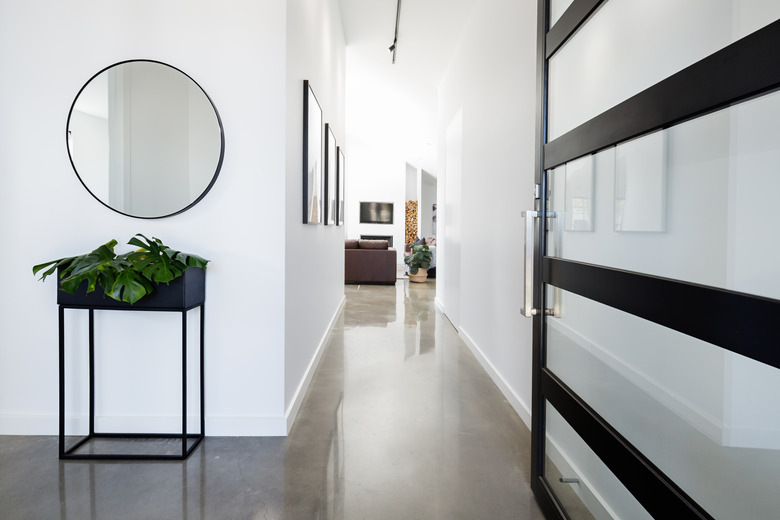Polished Concrete Vs. Epoxy
You have likely walked on either of these concrete flooring types at least once in your lifetime, but chances are that you didn't realize what you were stepping on. In many public spaces like building lobbies, schools, and gyms as well as in residential spaces, both polished concrete flooring and epoxy flooring make great choices. While these two types of floors may look and even sometimes feel similar beneath our feet, there are quite a few differences between the two.
What Is Polished Concrete?
What Is Polished Concrete?
To put it simply, polished concrete is just what it sounds like — a concrete slab that has been treated with special tools and techniques to give it a shiny or polished look. Concrete floors in residential spaces are created by "sanding" the concrete surface with diamond-segmented abrasives.
Polished concrete floors are commonly found in areas like retail spaces, museums, restaurants, loading docks and grocery stores. Polished concrete is also a very versatile material and is not just limited to commercial spaces.
In recent years, more and more people are opting for polished concrete in areas of their home where linoleum or vinyl may have been used before, like kitchens and bathrooms, according to Old House Journal. Since this floor type can easily stand up to moisture and heavy use, polished concrete can be a durable and low-maintenance option to consider.
What Is Epoxy Flooring?
What Is Epoxy Flooring?
Epoxy flooring is made up of a tough epoxy coating applied over a concrete slab. Generally, the epoxy layer is at least 2 millimeters thick and thicker than an epoxy paint or sealer that might be applied to a garage floor. Some of the most common types of epoxy flooring include quartz-filled epoxy, which contains graded quartz or quartz sand, and epoxy flake, which is similar but contains color chip-flake materials mixed within the resin. Additionally, self-leveling epoxy floors are sometimes installed to smooth out rough or damaged textures and surfaces on concrete floors.
Epoxy flooring can be used anywhere in the home just like polished concrete. It is particularly popular for kitchens because it is hard-wearing, stain-resistant and easy to maintain. This type of flooring is ideal for garages as well since it is durable, versatile and highly resistant to impact.
Differences Between the Two Flooring Options
Differences Between the Two Flooring Options
The main difference between a polished concrete floor and an epoxy floor is that polished concrete reveals the concrete itself, while epoxy is a continuous coating over the top of the concrete. If you want your concrete floor to look like concrete or at least an embellished version of concrete, opt for polishing. If you want a floor with a very consistent look and a highly durable, complete coating, look to epoxy. Epoxy can also provide a non-slip surface, which affects the look as well as the feel of the floor.
Pros and Cons of Each Flooring Option
Pros and Cons of Each Flooring Option
The primary disadvantage of polished concrete is its tendency to stain. It also must be sealed periodically for stain resistance, but the sealer can only do so much. Spills on polished concrete should be wiped up immediately to prevent staining. Additionally, if your concrete substrate is cracked, pitted or otherwise damaged, you will need to fill in these defects with an additional material, and the repairs are difficult to hide. On the positive side, polishing tends to be cheaper than epoxy, costing between $2 and $6 per square foot compared to $3 to $12 for epoxy, according to HomeAdvisor.
Epoxy floor coating is an incredibly strong material and is highly durable, especially under heavy weight, foot traffic and wear and tear. Unlike polished concrete, epoxy floors are not known to stain and can even stand up to tough situations that would damage most other flooring types, like chemical spills. Epoxy is also bacteria-resistant, making it a fantastic choice for spaces like bathrooms, kitchens and basements. Perhaps the major downfall of epoxy flooring is that it doesn't hold up to the test of time, usually requiring upgrades within a matter of a few years.
Both polished and epoxied concrete floors hold up well to scuffs and scratches and are very easy to clean, requiring only a quick sweep or vacuum and an occasional mopping. Either way you go, you will need a professional for one of these floors. They involve specialized techniques and tools as well as expert application.
References
- HTC: Understanding Polished Concrete
- Sealwell: What Is the Difference Between Epoxy vs Concrete Polishing?
- HomeAdvisor: How Much Do Polished Concrete Floors Cost?
- HomeAdvisor: How Much Does it Cost to Coat Concrete Flooring With Epoxy?
- Old House Journal: deas for Kitchen Floors: Linoleum, Tile & More


